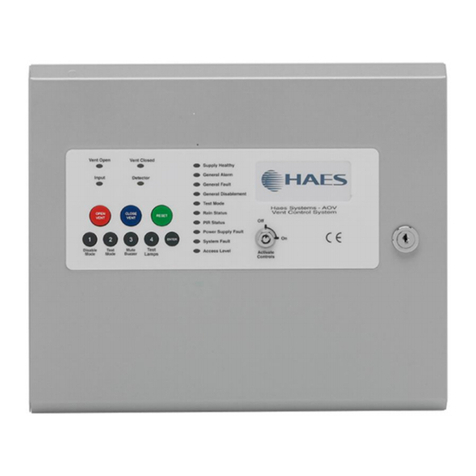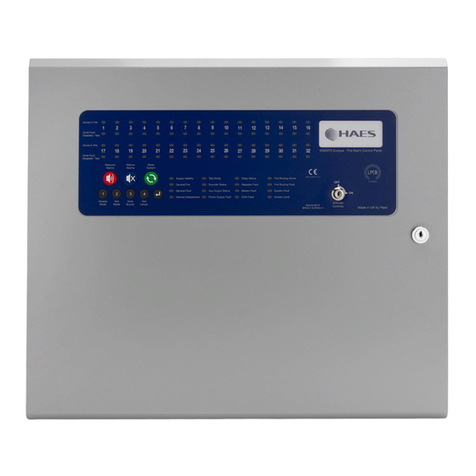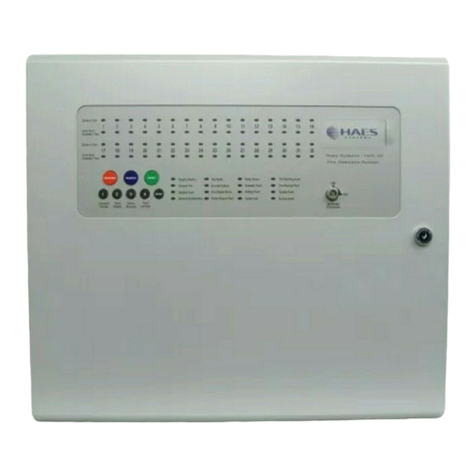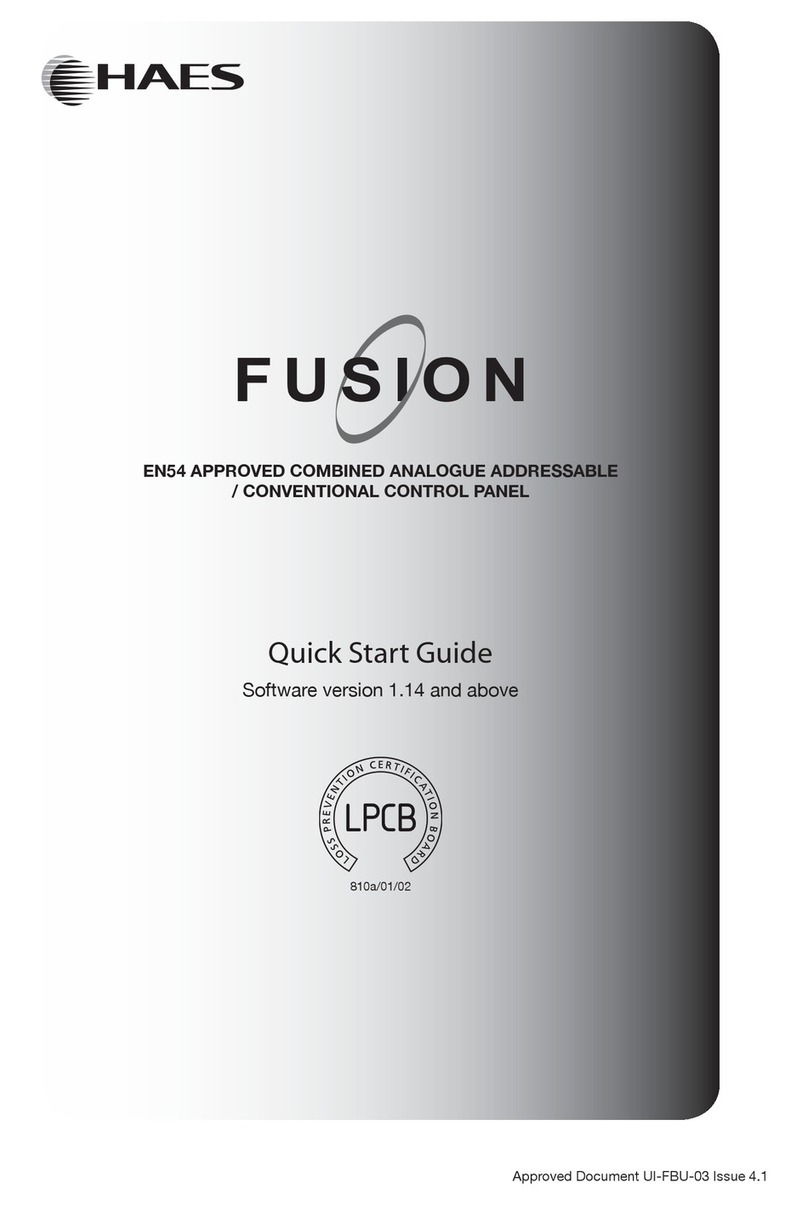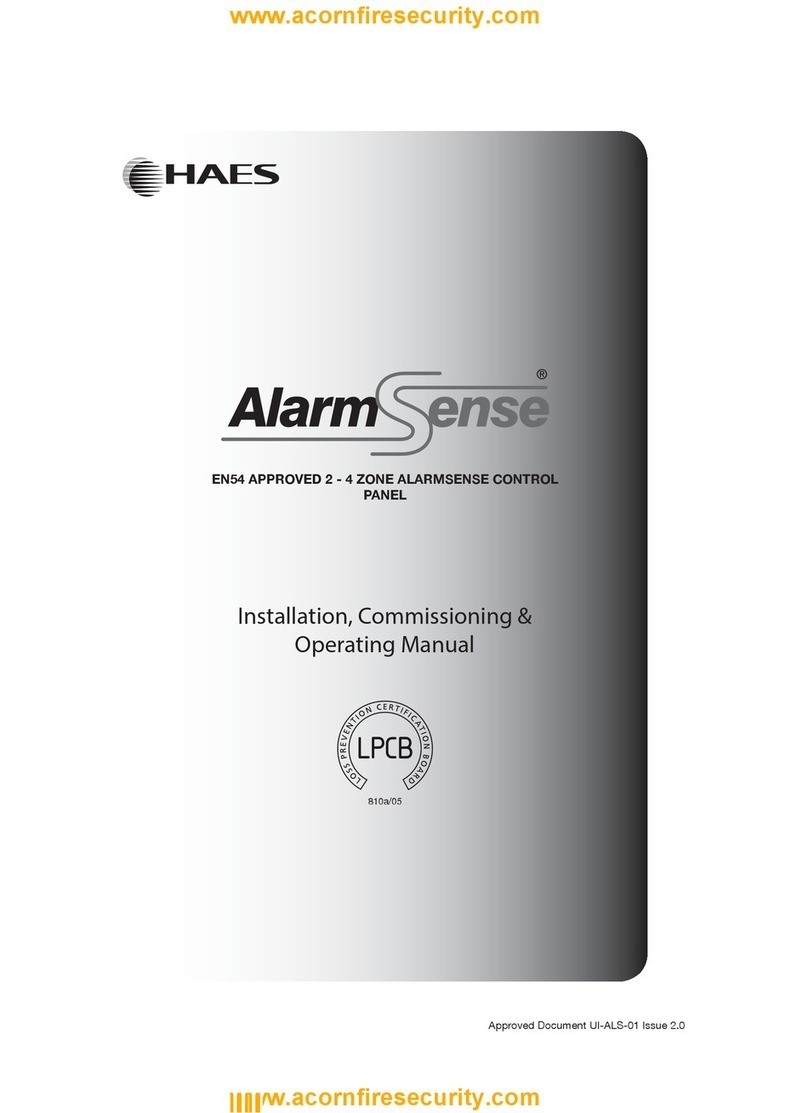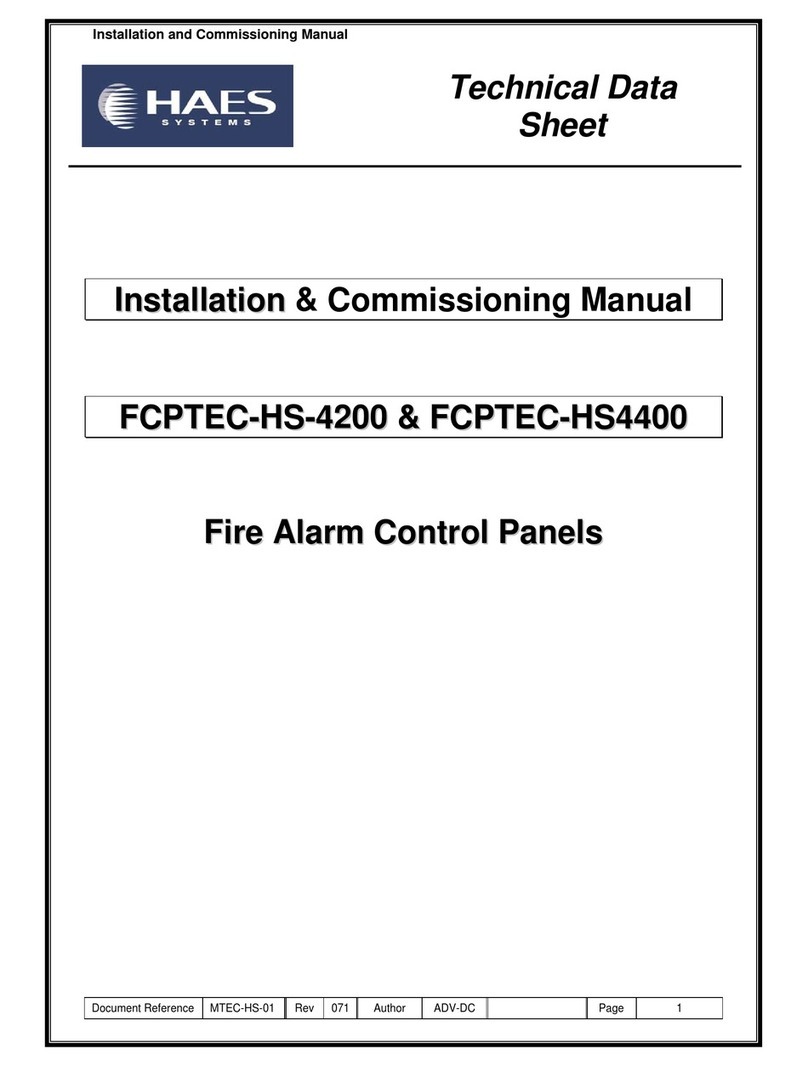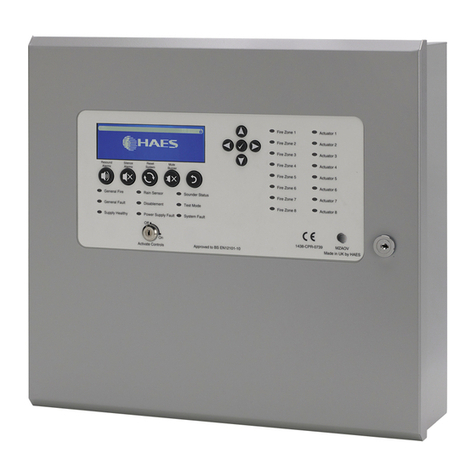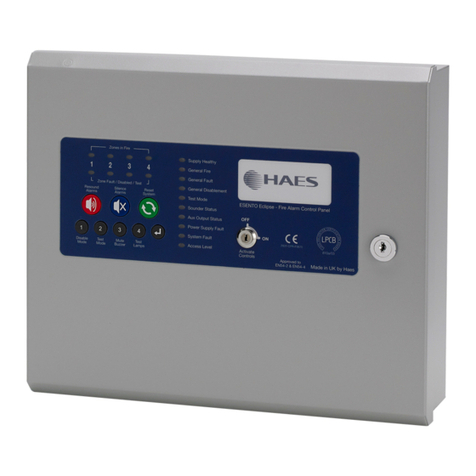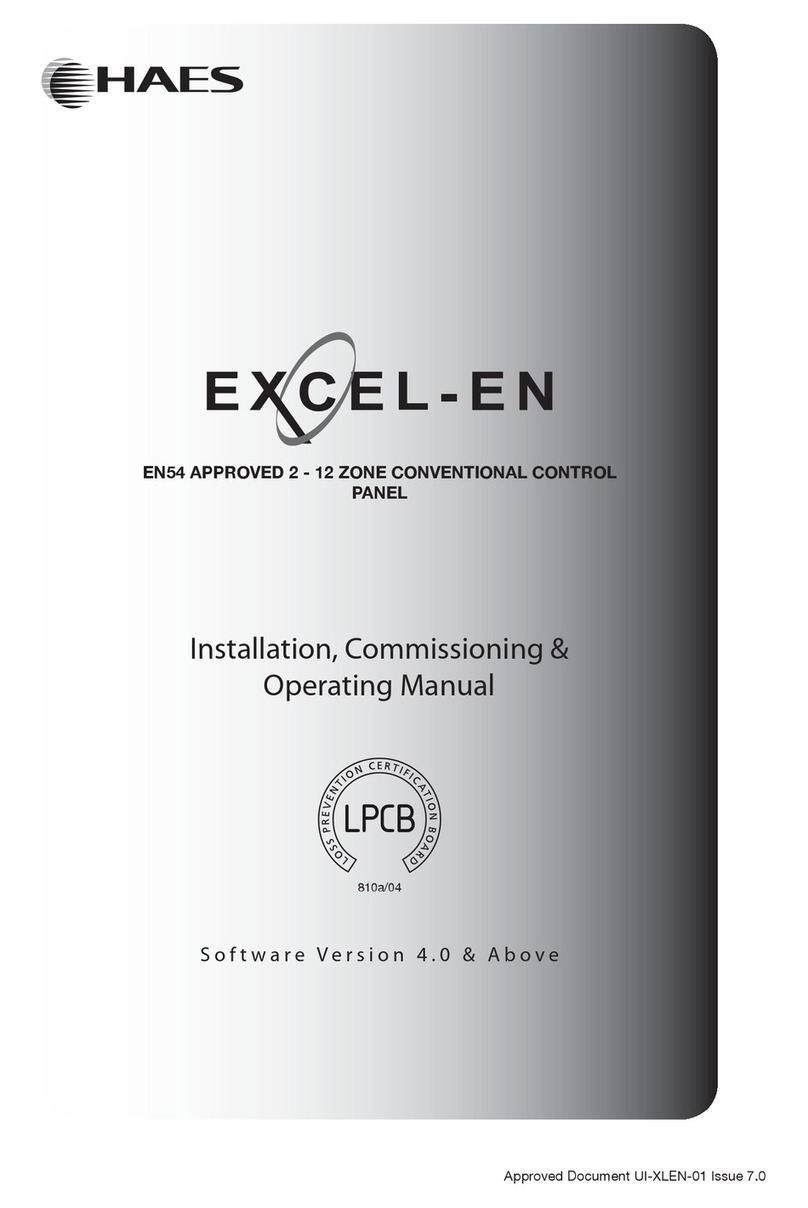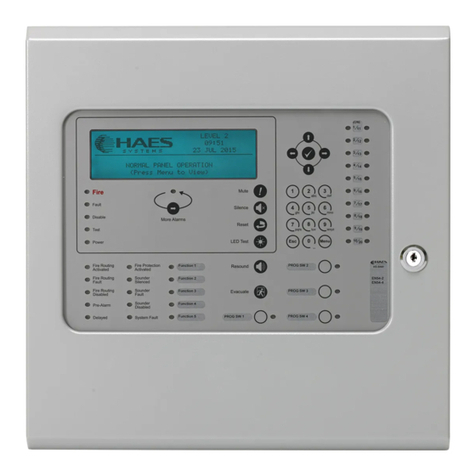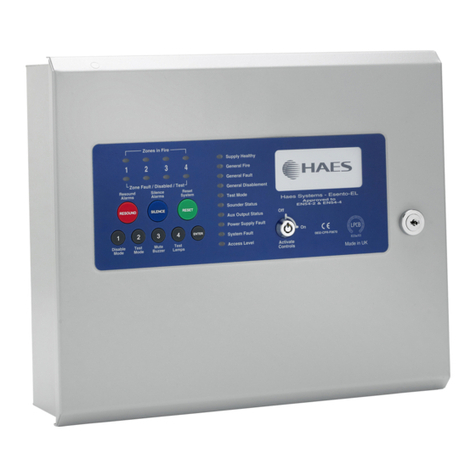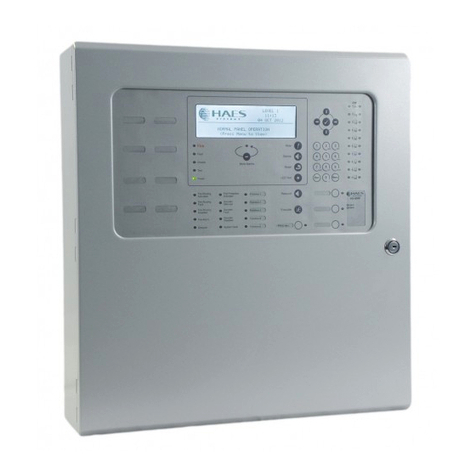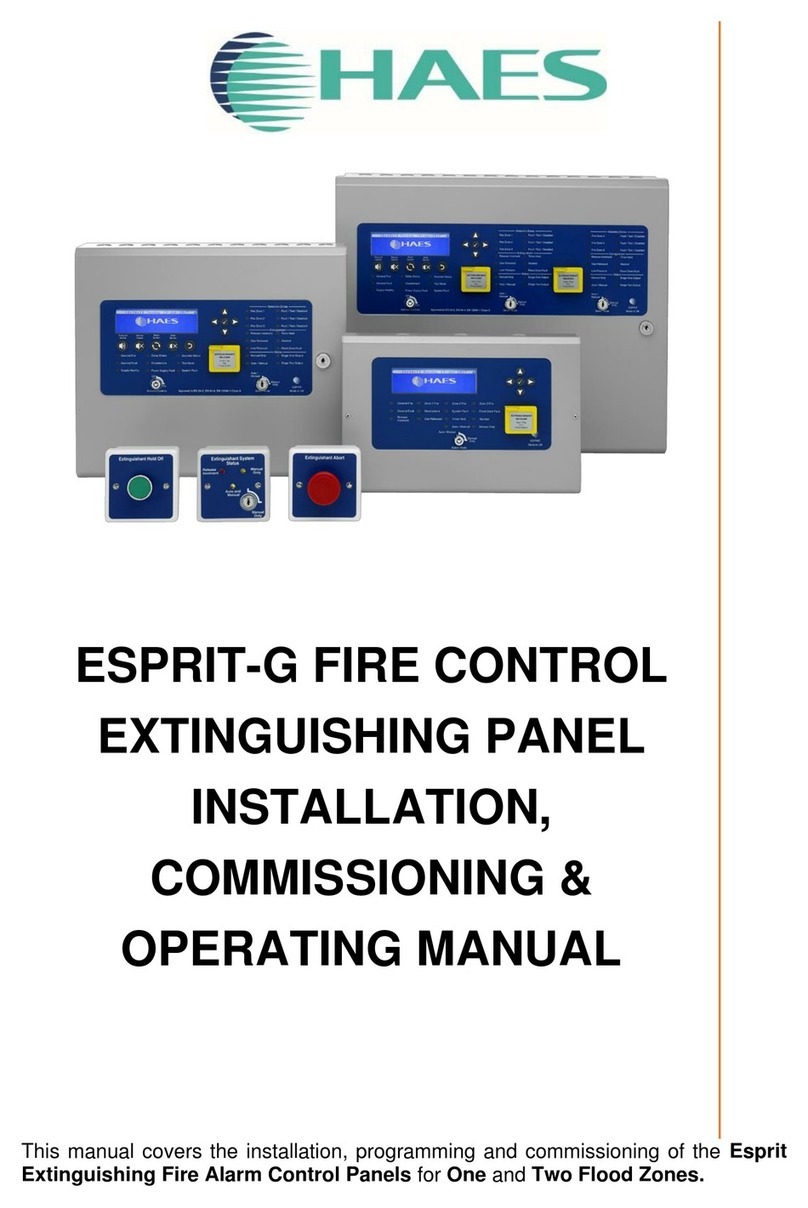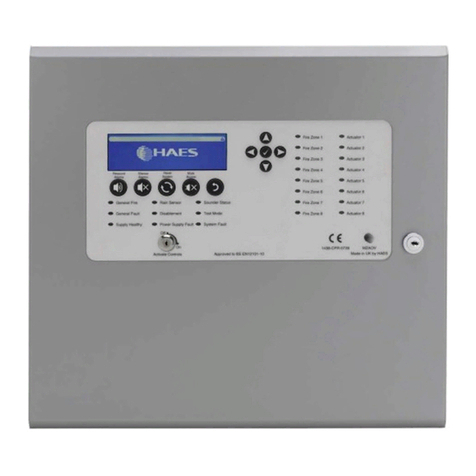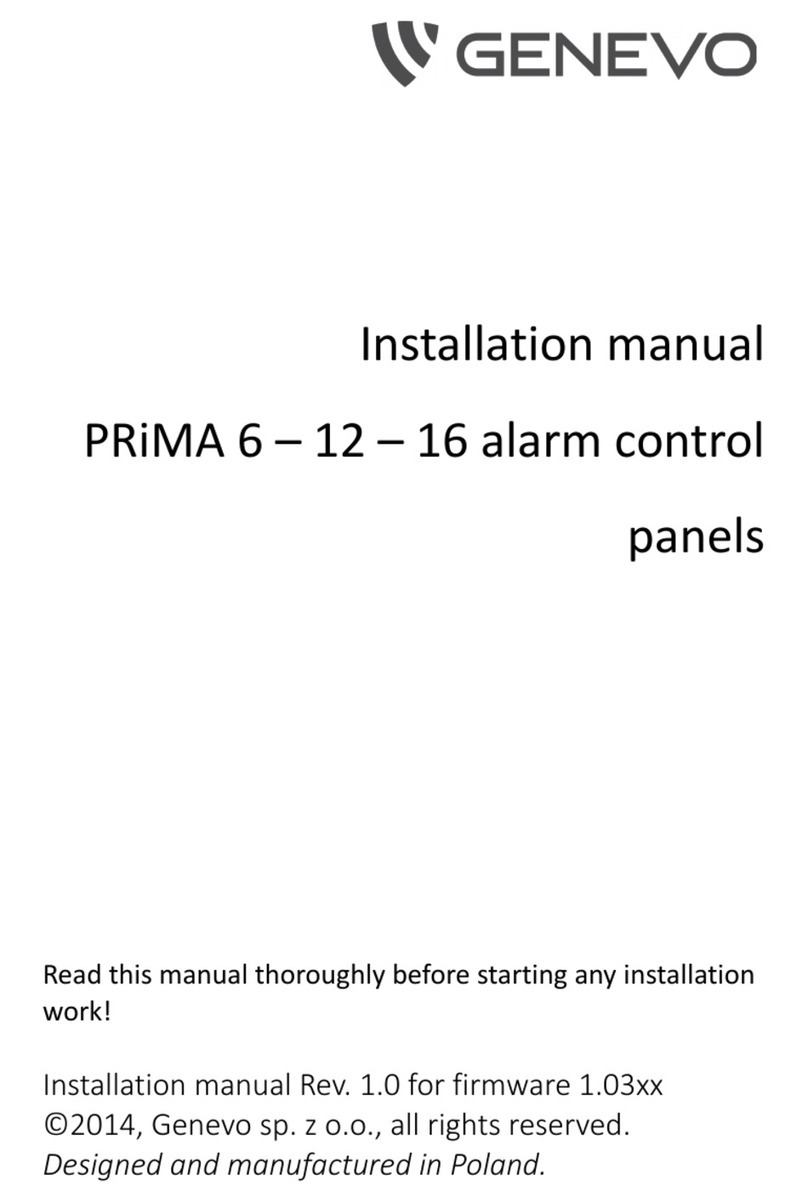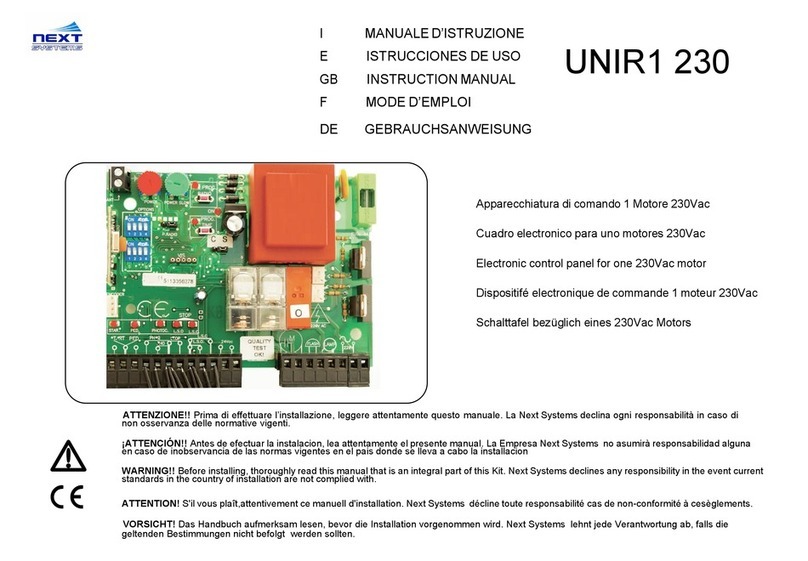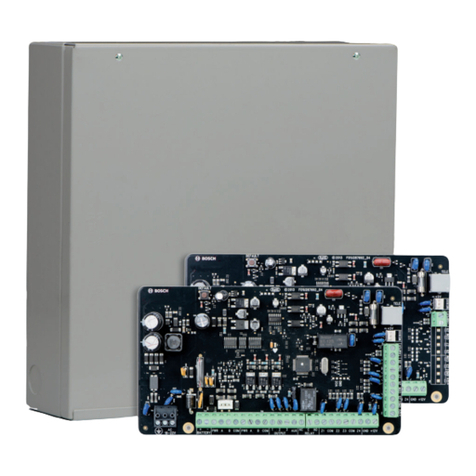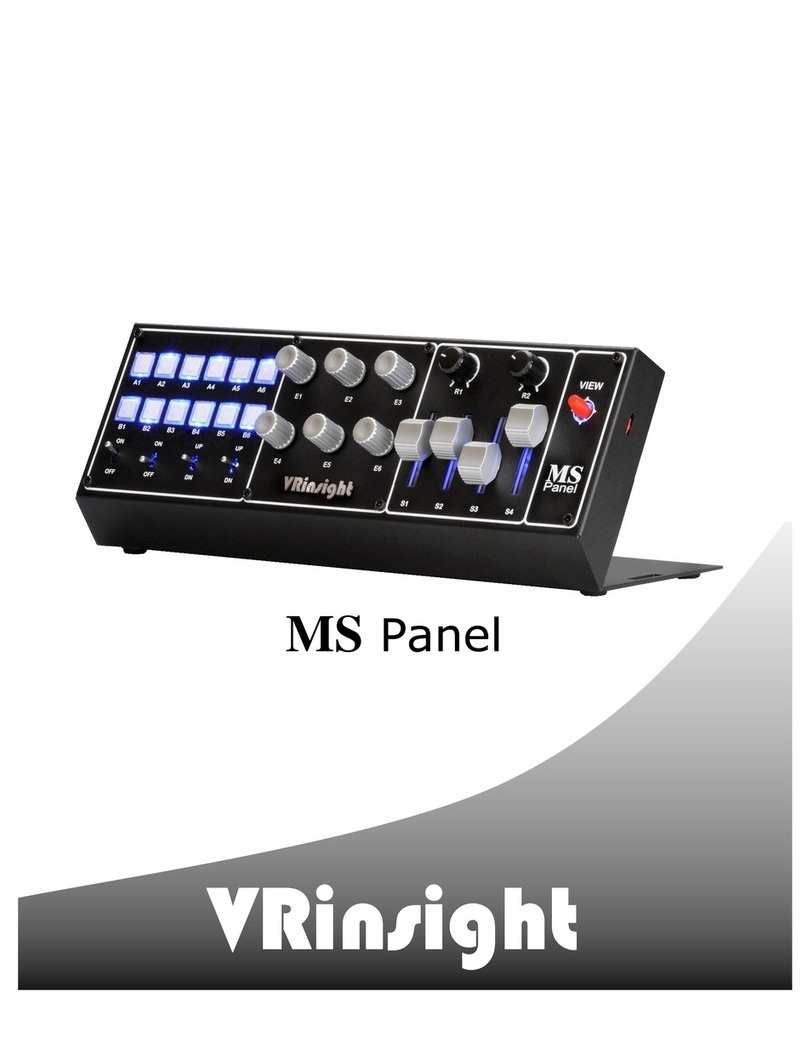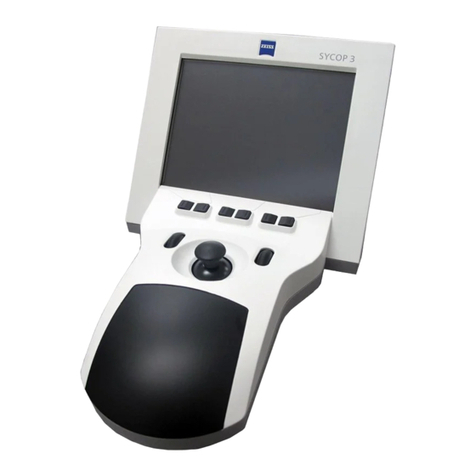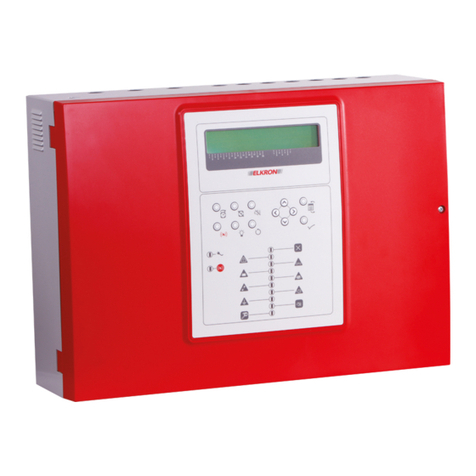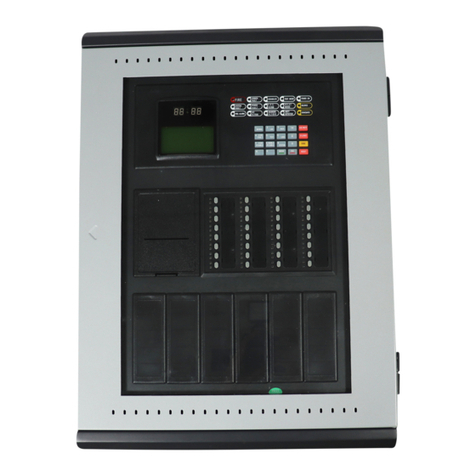
Esento Marine 8-12 Installation, Commissioning & Operating Manual Approved Document Ref: UI-ESEN12MAR-01 Issue 8.0
8
ABOUT THIS PANEL
TECHNICAL SPECIFICATION
Electrical Specication Inputs & Outputs - TPCA01-X2/X4 Main PCB
Terminal capacity 0.5mm2 to 2.5mm2solid or stranded wire.
PSU @ output Power supply voltage control line. For temperature compensation control.
PSU Input + - 28vdc supply input. Diode protected for
reversal and independent short circuit.
Max current 3 amps.
Max input current 3 amps. Input voltage
22vdc to 32vdc.
28v+, 0v- power output 28vdc supply output for re alarm
accessory relays etc. Max continuous
use = 400mA.
Fused @ 500mA. Fuse = 500mA
resettable fuse.
Common re relay Fire relay contact. Clean C/O.
Max 3A @ 30vdc.
Unfused
Common fault relay Maintained fault relay contact. Clean C/O
Max 3A @ 30vdc.
Unfused
Outputs; FR, FLT Switched -ve voltage outputs for relay
control.
Overload voltage protected to 52vdc.
Current limited 680R. Max load = 40mA
Inputs; CC, PUL Switched -ve inputs, connect to 0v to
trigger. Max input voltage = 28vdc. Non
latching, max resistance 100R.
Protected via 10K Ohm impedance, 3v6
zener diode.
SNDR 1 - 2 28vdc polarity reversal monitored
sounder outputs to re alarm devices.
4K7 Ohm 5% 0.25W EOL resistor.
Monitoring current limit 28mA, fused @
500mA. Typical max load 22 devices @
18mA each per circuit. Ensure 2.4A is not
exceeded.
Zone 1 - 4 Conventionally wired re alarm zone
circuits. 4K7 Ohm 5% 0.25W EOL
resistor.
Maximum detector load 3.5mA per zone,
Typical qty 40-50 Apollo marine optical
detectors, Note:- Max 32 detectors with
line continuity diode bases tted
Electrical Specication Inputs & Outputs - TPCA04-S/H zone cards
Terminal capacity 0.5mm2 to 2.5mm2solid or stranded wire.
Zone A - D Conventionally wired re alarm zone
circuits. 4K7 Ohm 5% 0.25W EOL
resistor.
Maximum detector load 3.5mA per zone,
Typical qty 40-50 Apollo marine optical
detectors, Note:- Max 32 detectors with
line continuity diode bases tted
Programmable outputs OP A & OP B Switched -ve voltage outputs for relay
control.
Overload voltage protected to 52vdc.
Current limited 680R. Max load = 40mA
Programmable relay ouput Fire relay contact. Clean C/O, C & N/O
Max 3A @ 30vdc.
Unfused
SNDR A - B 28vdc polarity reversal monitored
sounder outputs to re alarm devices.
4K7 Ohm 5% 0.25W EOL resistor.
Monitoring current limit 28mA, fused @
500mA. Typical max load 22 devices @
18mA each per circuit. Ensure 2.4A is not
exceeded.
Electrical Specication Inputs & Outputs - TPCA05 comms PCB
Comms A - B RS485 Repeater Comms, fused @ 20mA
28v Supply output Fused @ 500mA
Programmable outputs 1 - 6 Switched -ve outputs Overload voltage protected to 52vdc
Current limited 680R
Max load = 40mA
